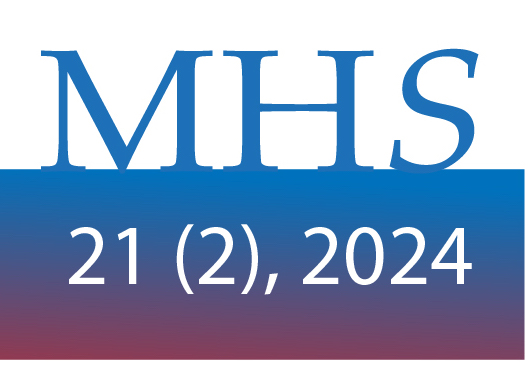A suplementação aguda de nitratos afeta os pontos de transição em testes incrementais progressivos?
DOI:
https://doi.org/10.15359/Palavras-chave:
Desempenho, Frequência Cardíaca, Limiares, Suplementação, VelocidadeResumo
Introdução: A suplementação com nitratos tem mostrado resultados promissores em esportes de resistência. Objetivo: Este estudo tem como objetivo usar a frequência cardíaca (FC) e seus derivados—o ponto de inflexão da frequência cardíaca (HRIP) e o ponto de deflexão da frequência cardíaca (HRDP)—para detectar pontos de transição metabólica (MTPs) e a velocidade máxima (Vpeak) em corredores amadores após suplementação aguda com nitrato (NO3-) a partir de suco de beterraba açucareira. Metodologia: Administramos 70 ml de suco concentrado de beterraba rico em NO3- (~6,4 mmol NO3- - 400 mg) ou um placebo sem NO3- (0,04 mmol NO3- >0,8 g/L) para treze atletas masculinos amadores duas horas antes de realizarem um teste progressivo incremental (PIT) em uma esteira até a exaustão, com um período de lavagem de 7 dias. Plotamos os dados de FC a cada 2 minutos para identificar HRIP e HRDP, sendo necessário que os participantes alcançassem pelo menos 90% de sua FC máxima (HRMAX) para que o teste fosse considerado máximo. Calculamos Vpeak usando a fórmula de Kuipers e estabelecemos o limiar de significância estatística em p<0,05. Resultados: Os valores de HRMAX após a suplementação com placebo ou suco de beterraba não apresentaram diferenças significativas (p=0,573). De maneira semelhante, os dados de MTP, incluindo HRIP (p=0,252) e os valores de HRDP (p=0,508), não mostraram diferenças significativas após a suplementação. Não foram observadas diferenças em Vpeak ou nas velocidades em HRIP e HRDP após a suplementação (p=0,562; p=0,340, respectivamente). Conclusões: A suplementação com nitratos não melhorou o desempenho, conforme evidenciado pelas métricas de HRMAX, HRIP, HRDP e Vpeak, que permaneceram inalteradas após a suplementação.
Referências
Alvero-Cruz, J. R., Carnero, E. A., García, M. A. G., Cárceles, F. A., Correas-Gómez, L., Rosemann, T., Nikolaidis, P. T., & Knechtle, B. (2020). Predictive Performance Models in Long-Distance Runners: A Narrative Review. International Journal of Environmental Research and Public Health, 17(21), 1–22. https://doi.org/10.3390/IJERPH17218289
Bodner, M. E., & Rhodes, E. C. (2000). A review of the concept of the heart rate deflection point. Sports Medicine, 30(1), 31–46. https://doi.org/10.2165/00007256-200030010-00004
Borszcz, F. K., Tramontin, A. F., Bossi, A. H., Carminatti, L. J., & Costa, V. P. (2018). Functional Threshold Power in Cyclists: Validity of the Concept and Physiological Responses. International Journal of Sports Medicine, 737–742. https://doi.org/10.1055/s-0044-101546
Camargo Alves, J. C., Peserico, C. S., Nogueira, G. A., & Machado, F. A. (2017). Influence of continuous and discontinuous graded exercise tests with different initial speeds on peak treadmill speed. Science & Sports, 32(1), e15–e22. https://doi.org/10.1016/J.SCISPO.2016.08.003
Cambri, L. T., Foza, V., Nakamura, F. Y., & Oliveira, F. R. de. (2008). Heart rate and the identification of metabolic transition points in treadmill exercises. Journal of Physical Education, 17(2), 131–137. https://www.periodicos.uem.br/ojs/index.php/RevEducFis/article/view/3325
Couto, P. G., Rodrigues, A. P., Júnior, A. J. F., Da Silva, S. F., & De-Oliveira, F. R. (2013). Pontos de transição da frequência cardíaca em teste progressivo máximo. Motriz: Revista de Educação Física, 19(2), 261–268. https://doi.org/10.1590/S1980-65742013000200003
De A. Manoel, F., Peserico, C. S., & Machado, F. A. (2022). Novel track field test to determine Vpeak, relationship with treadmill test and 10-km running performance in trained endurance runners. PLoS ONE, 17(1). https://doi.org/10.1371/JOURNAL.PONE.0260338
De Assis Pereira, P. E., Piubelli Carrara, V. K., Mello Rissato, G., Pereira Duarte, J. M., Fernandes Guerra, R. L., & Silva Marques DE Azevedo, P. H. (2016). The relationship between the heart rate deflection point test and maximal lactate steady state. The Journal of Sports Medicine and Physical Fitness, 56(5), 497–502. http://www.ncbi.nlm.nih.gov/pubmed/26014090
Denadai, B. S., Ortiz, M. J., & Mello, M. T. de. (2004). Índices Fisiológicos Associados Com a “Performance” Aeróbia Em Corredores De “Endurance”: Efeitos Da Duração Da Prova. Revista Brasileira de Medicina Do Esporte, 10(5), 401–404. https://doi.org/10.1590/s1517-86922004000500007
Durnin, J. V. G. A., & Womersley, J. (1974). Body fat assessed from total body density and its estimation from skinfold thickness: measurements on 481 men and women aged from 16 to 72 years. The British Journal of Nutrition, 32(1), 77–97. https://doi.org/10.1079/BJN19740060
Figueiredo, D. H., Figueiredo, D. H., Manoel, F. de A., & Machado, F. A. (2021). Peak Running Velocity or Critical Speed Under Field Conditions: Which Best Predicts 5-km Running Performance in Recreational Runners? Frontiers in Physiology, 12. https://doi.org/10.3389/FPHYS.2021.680790
Garnacho-Castaño, M. V., Palau-Salvà, G., Cuenca, E., Muñoz-González, A., García-Fernández, P., del Carmen Lozano-Estevan, M., Veiga-Herreros, P., Maté-Muñoz, J. L., & Domínguez, R. (2018). Effects of a single dose of beetroot juice on cycling time trial performance at ventilatory thresholds intensity in male triathletes. Journal of the International Society of Sports Nutrition, 15(1). https://doi.org/10.1186/S12970-018-0255-6
Garrett, J., Akyildiz, Z., Leduc, C., van den Hoek, D., Manuel Clemente, F., & Ardigò, L. P. (2023). Peak running speed can be used to monitor neuromuscular fatigue from a standardized running test in team sport athletes. Research in Sports Medicine (Print), 31(4), 319–330. https://doi.org/10.1080/15438627.2021.1966012
Ghiarone, T., Ataide-Silva, T., Bertuzzi, R., McConell, G. K., & Lima-Silva, A. E. (2017). Effect of acute nitrate ingestion on V̇O2 response at different exercise intensity domains. Applied Physiology, Nutrition, and Metabolism = Physiologie Appliquee, Nutrition et Metabolisme, 42(11), 1127–1134. https://doi.org/10.1139/APNM-2017-0198
Ghiarone, T., Ataide-Silva, T., Romulo Bertuzzi,;, Glenn, ;, Mcconell, K., Adriano, ;, Lima-Silva, E., & Lima-Silva, A. E. (n.d.). Effect of acute nitrate ingestion on V O 2 response at different exercise intensity domains. In Appl. Physiol. Nutr. Metab. Downloaded from www.nrcresearchpress.com by San Diego. www.nrcresearchpress.com
Heck, H., Mader, A., Hess, G., Mucke, S., Muller, R., & Hoflmann, W. (1985). Justification of the 4-mmol/l Lactate Threshold. International Journal Sports Medicine, 6, 117–130. 10.1055/s-2008-1025824
Hogan, M. C. (2021). What Wasserman wrought: a celebratory review of 50 years of research arising from the concept of an ‘anaerobic threshold.’ Journal of Physiology, 599(4), 1005. https://doi.org/10.1113/JP280980
Jamnick, N. A., Botella, J., Pyne, D. B., & Bishop, D. J. (2018). Manipulating graded exercise test variables affects the validity of the lactate threshold and V_O2peak. PLoS ONE, 13(7), 1–21. https://doi.org/10.1371/journal.pone.0199794
Jones, A. M., Burnley, M., Black, M. I., Poole, D. C., & Vanhatalo, A. (2019). The maximal metabolic steady state: redefining the ‘gold standard.’ Physiological Reports, 7(10), 1–16. https://doi.org/10.14814/phy2.14098
Jones, A. M., & Jones, A. M. (2022). The fourth dimension: physiological resilience as an independent determinant of endurance exercise performance. J Physiol, 0. https://doi.org/10.1113/JP284205#support-information-section
Kuipers, H., Rietjens, G., Verstappen, F., Schoenmakers, H., & Hofman, G. (2003). Effects of stage duration in incremental running tests on physiological variables. International Journal of Sports Medicine, 24(7), 486–491. https://doi.org/10.1055/s-2003-42020
Machado, F. A., Kravchychyn, A. C. P., Peserico, C. S., da Silva, D. F., & Mezzaroba, P. V. (2013). Incremental test design, peak “aerobic” running speed and endurance performance in runners. Journal of Science and Medicine in Sport, 16(6), 577–582. https://doi.org/10.1016/j.jsams.2012.12.009
Maughan, R. J., Burke, L. M., Dvorak, J., Larson-Meyer, D. E., Peeling, P., Phillips, S. M., Rawson, E. S., Walsh, N. P., Garthe, I., Geyer, H., Meeusen, R., Van Loon, L. J. C., Shirreffs, S. M., Spriet, L. L., Stuart, M., Vernec, A., Currell, K., Ali, V. M., Budgett, R. G., … Engebretsen, L. (2018). IOC consensus statement: Dietary supplements and the high-performance athlete. In British Journal of Sports Medicine (Vol. 52, Issue 7, pp. 439–455). BMJ Publishing Group. https://doi.org/10.1136/bjsports-2018-099027
McQuillan, J. A., Dulson, D. K., Laursen, P. B., & Kilding, A. E. (2017). The Effect of Dietary Nitrate Supplementation on Physiology and Performance in Trained Cyclists. International Journal of Sports Physiology and Performance, 12(5), 684–689. https://doi.org/10.1123/IJSPP.2016-0202
Nummela, A., Hämälädinen, I., & Rusko, H. (2007). Comparison of maximal anaerobic running tests on a treadmill and track. Journal of Sports Sciences, 25(1), 87–96. https://doi.org/10.1080/02640410500497717
Pereira Guimarães, M., Yuri A. C. Campos, H. L. R. de, & Souza, S. F. da S. (2017). Is There a Concordance between the Lactate Threshold and the Heart Rate Deflection Point during a Progressive Field Test in Moderately Trained Distance Runners? JEPonline, 20(5), 60–68. https://www.researchgate.net/publication/320170984_Journal_of_Exercise_Physiologyonline_JEPonline_Is_There_a_Concordance_between_the_Lactate_Threshold_and_the_Heart_Rate_Deflection_Point_during_a_Progressive_Field_Test_in_Moderately_Trained_Distance_R
Peserico, C. S., Fernandes Da Silva, D., & Machado, F. A. (2016). Heart rate deflection point determined by D max method is reliable in recreationally-trained runners. Arch Med Deporte, 33(3). https://www.researchgate.net/publication/306977493_Heart_rate_deflection_point_determined_by_Dmax_method_is_reliable_in_recreationally-trained_runners
Pinna, M., Roberto, S., Milia, R., Marongiu, E., Olla, S., Loi, A., Migliaccio, G. M., Padulo, J., Orlandi, C., Tocco, F., Concu, A., & Crisafulli, A. (2014). Effect of beetroot juice supplementation on aerobic response during swimming. Nutrients, 6(2), 605–615. https://doi.org/10.3390/NU6020605
Poole, D. C., Rossiter, H. B., Brooks, G. A., & Gladden, L. B. (2021). The anaerobic threshold: 50+ years of controversy. The Journal of Physiology, 599(3), 737–767. https://doi.org/10.1113/JP279963
Quittmann, O. J., Foitschik, T., Vafa, R., Freitag, F. J., Sparmann, N., Nolte, S., & Abel, T. (2022). Is Maximal Lactate Accumulation Rate Promising for Improving 5000-m Prediction in Running? International Journal of Sports Medicine. https://doi.org/10.1055/A-1958-3876
Rhea, M. R. (2004). Determining the magnitude of treatment effects in strength training research through the use of the effect size. Journal of strength and conditioning research, v. 18, p. 918–920. https://doi.org./10.1519/14403.1
Rokkedal-Lausch, T., Franch, J., Poulsen, M. K., Thomsen, L. P., Weitzberg, E., Kamavuako, E. N., Karbing, D. S., & Larsen, R. G. (2019). Chronic high-dose beetroot juice supplementation improves time trial performance of well-trained cyclists in normoxia and hypoxia. Nitric Oxide - Biology and Chemistry, 85, 44–52. https://doi.org/10.1016/j.niox.2019.01.011
Tan, R., Wylie, L. J., Thompson, C., Blackwell, J. R., Bailey, S. J., Vanhatalo, A., & Jones, A. M. (2018). Beetroot juice ingestion during prolonged moderate-intensity exercise attenuates progressive rise in O2 uptake. Journal of Applied Physiology (Bethesda, Md.: 1985), 124(5), 1254–1263. https://doi.org/10.1152/JAPPLPHYSIOL.01006.2017
Tanaka, H., Monahan, K. D., & Seals, D. R. (2001). Age-predicted maximal heart rate revisited. Journal of the American College of Cardiology, 37(1), 153–156. https://doi.org/10.1016/S0735-1097(00)01054-8
Vasconcelos, G., Canestri, R., Prado, R. C. R., Brietzke, C., Franco-Alvarenga, P., Santos, T. M., & Pires, F. O. (2019). A comprehensive integrative perspective of the anaerobic threshold engine. Physiology & Behavior, 210. https://doi.org/10.1016/J.PHYSBEH.2019.01.019
Vobejda, C., Fromme, K., Samson, W., & Zimmermann, E. (2006). Maximal constant heart rate - A heart rate-based method to estimate maximal lactate steady state in running. International Journal of Sports Medicine, 27(5), 368–372. https://doi.org/10.1055/s-2005-865717 65717.
Downloads
Publicado
Como Citar
Edição
Seção
Licença
Copyright (c) 2024 MHSalud: Revista en Ciencias del Movimiento Humano y Salud

Este trabalho é licenciado sob uma licença Creative Commons Attribution-NonCommercial-NoDerivatives 3.0 International License.
Termos e condições gerais

MHSalud: Revista en Ciencias del Movimiento Humano y Salud da Universidad Nacional é licenciada sob uma Licença Creative Commons Attribution-NonCommercial-NoDerivatives 3.0 Costa Rica.
A revista está hospedada em repositórios de acesso aberto, como o Repositório Institucional da Universidade Nacional, o Repositório Kimuk da Costa Rica e a Referência.
A fonte editorial da revista deve ser reconhecida. Use para esse fim o identificador doi da publicação.
Política de autoarquivamento: A revista permite o autoarquivamento de artigos em sua versão revisada, editada e aprovada pelo Conselho Editorial da revista para que estejam disponíveis em Acesso Aberto através da Internet. Mais informações no link a seguir: https://v2.sherpa.ac.uk/id/publication/25815


















